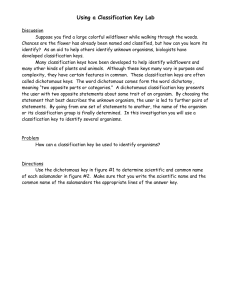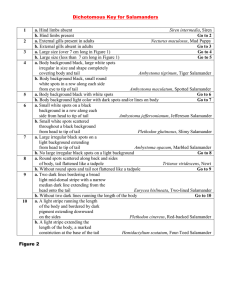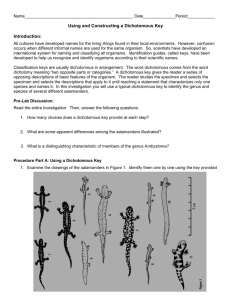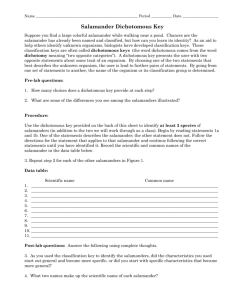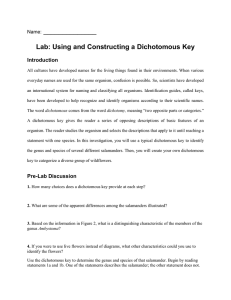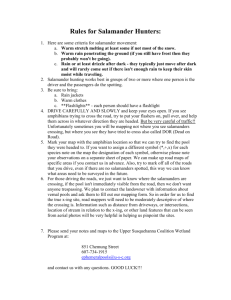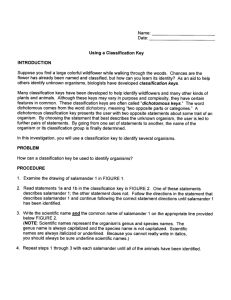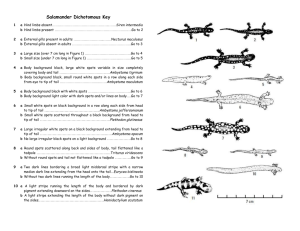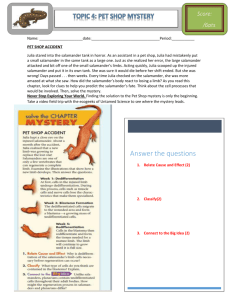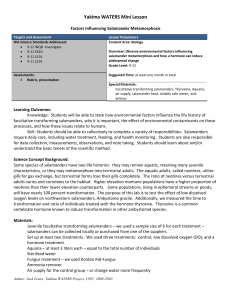Dichotomous Key to Salamanders
advertisement
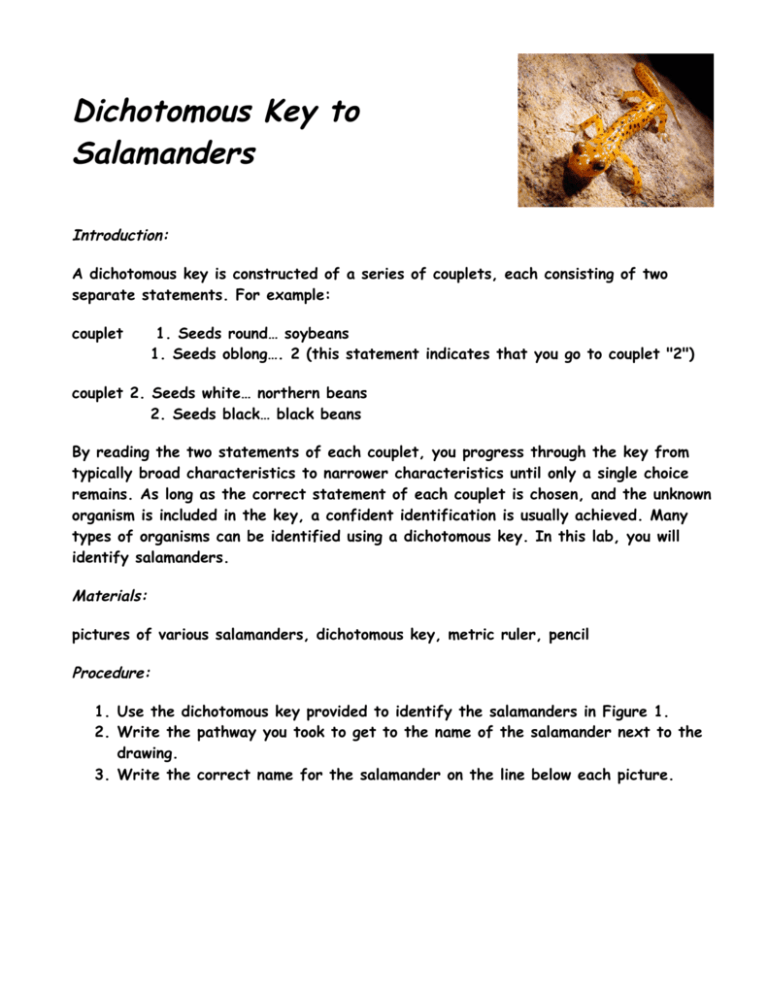
Dichotomous Key to Salamanders Introduction: A dichotomous key is constructed of a series of couplets, each consisting of two separate statements. For example: couplet 1. Seeds round… soybeans 1. Seeds oblong…. 2 (this statement indicates that you go to couplet "2") couplet 2. Seeds white… northern beans 2. Seeds black… black beans By reading the two statements of each couplet, you progress through the key from typically broad characteristics to narrower characteristics until only a single choice remains. As long as the correct statement of each couplet is chosen, and the unknown organism is included in the key, a confident identification is usually achieved. Many types of organisms can be identified using a dichotomous key. In this lab, you will identify salamanders. Materials: pictures of various salamanders, dichotomous key, metric ruler, pencil Procedure: 1. Use the dichotomous key provided to identify the salamanders in Figure 1. 2. Write the pathway you took to get to the name of the salamander next to the drawing. 3. Write the correct name for the salamander on the line below each picture. Figure 1 - Types of salamanders Key to the Salamanders: 1 a b 2 a b 3 a b 4 a b 5 a b 6 a b 7 a b 8 a b 9 a b 10 a b Siren Hind limbs present Go to 2 External gills present in adults Mud puppy External gills absent in adults Go to 3 Large size (over 7 cm long) Go to 4 Small size (under 7 cm long) Go to 5 Body background black, large white spots irregular in shape and Tiger size completely covering body & tail salamander Body background black, small, round, white spots in a row Spotted along each side fro eye to tip of tail Salamander Body background black with white spots Go to 6 Body background light color with dark spots and or lines on Go to 7 body Small white spots on a black background in a row along each Jefferson side from head to tip of tail salamander Small white spots on a scattered throughout a black Slimy background from head to tip of tail salamander Large irregular black spots on a light background extending Marbled from head to tip of tail salamander No large irregular black spots on a light background Go to 8 Round spots scattered along back and sides of body, tail Newt flattened like a tadpole Without round spots and tail not flattened like a tadpole Go to 9 Two dark lines bordering a broad, light mid-dorsal stripe with Two-lined a narrow median dark line extending from the head onto the salamander tail Without two dark lines running the length of the body Go to 10 RedA light stripe running the length of the body and bordered by backed dark pigment extending downward on the sides salamander A light stripe extending the length of the body, a marked Four-toed constriction at the base of the tail salamander Hind limbs absent

